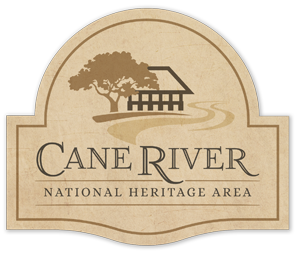The Cane River region was inhabited solely by the Caddo Indians in the late 1600s. They were farmers who grew crops of corn, beans, squash, and pumpkins, and they supplemented these crops by hunting deer, bears, birds, and fishing in the rivers and lakes of the area.
In 1701, French explorer Louis Juchereau de St. Denis arrived as part of an expedition to explore the region and began trade relations between the French and the American Indians.
Soon after, both French and Spanish would claim the area. St. Denis returned to the Cane River region in the winter of 1713-14 and constructed a barrack and storage house to support the Indian trade. This settlement signaled the founding of the town of Natchitoches. In 1716, the Spanish built a presidio, Los Adaes, just a few miles west of the French-controlled Natchitoches to protect the interests of Spain on the frontier. Interaction between the groups was inevitable, and in time, Natchitoches would become a bustling trade center between the Indians, the French, and the Spanish.
The French importing of African slaves ushered in a plantation system that would dominate the region’s economy for over 200 years. In the late 18th century, tobacco and indigo were grown using slave labor. The invention of the cotton gin by Eli Whitney redirected the planters’ attention to cotton, which soon became the preferred crop of the south, and the Red River region was no exception. Plantation homes like Magnolia, Melrose, Cherokee, Oaklawn, Beau Fort, and Oakland flourished within the region.
As the Civil War raged throughout the nation, Natchitoches found itself an obstacle in Union General Nathaniel Banks’ campaign to capture the Confederate Capitol at Shreveport. The Red River Campaign sparked chaos within the Cane River region, as Confederate forces burned cotton gins and storehouses to prevent their capture, and Union forces burned property as they retreated downriver following their defeat at Mansfield. The devastation left in the aftermath of the Civil War meant a long recovery period, as planter families and newly freed slaves began to farm once again. While former enslaved individuals became sharecroppers or tenant farmers, white planters slowly rebuilt their fortunes.
By the early 20th century, Natchitoches had recovered from the hardships left by the Civil War and Reconstruction years. Construction within the Front Street commercial district continued steadily during this time. The majority of the buildings on Front Street were completed by the 1940s, although most were modernized in later years.
Today, this remarkable legacy is celebrated and preserved throughout the Cane River National Heritage Area. The city of Natchitoches serves as the tourism hub of the rural agricultural heritage area, which stretches 35 miles along the Cane River. More than 30 sites within the Cane River National Heritage Area are listed on the National Register of Historic Places, and seven have received the distinction of being designated as a National Historic Landmark, including the 33-block downtown district of Natchitoches. In recent years, Natchitoches has received additional national recognition as a Preserve America Community, a Great American Main Street, and a Distinctive Destination.











